中國最大的民營企業(yè):把未來托付給數(shù)據(jù)
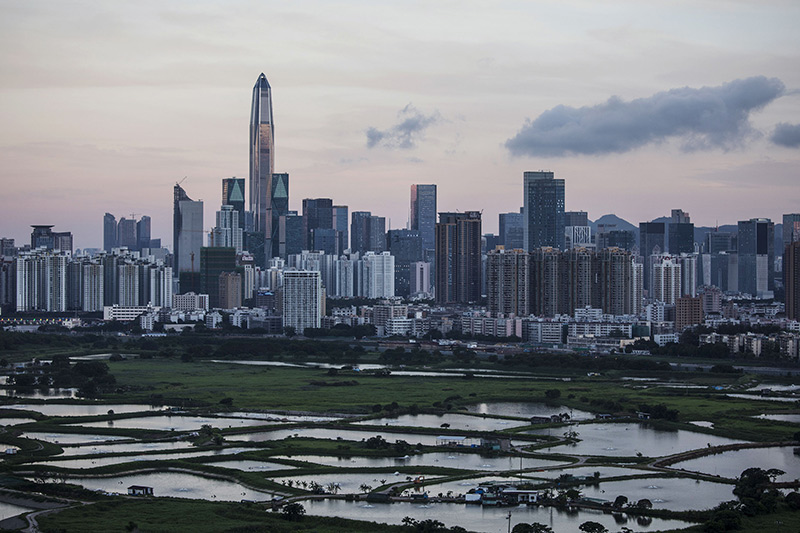
|
輕微交通事故,即便是小小的剮蹭,在過去也會引發(fā)中國司機(jī)之間無止盡的口角。當(dāng)事人可能需要在路邊花數(shù)個(gè)小時(shí)等待保險(xiǎn)查勘人員的到來,然后再花數(shù)個(gè)小時(shí)填寫表格。需要耗費(fèi)數(shù)天或通常數(shù)周的時(shí)間才能夠得到賠償。 2017年,平安這家中國第二大險(xiǎn)企和中國營收最高的非國有公司,推出了“極速現(xiàn)場查勘”系統(tǒng)。投保人只需要打開智能手機(jī)的應(yīng)用程序,回答幾個(gè)問題,然后便可以提交索賠。但該應(yīng)用程序最妙的功能在于,當(dāng)事人可以無需等待查勘員的到來。客戶可以對受損車輛拍照,并將其發(fā)送至平安公司的服務(wù)器,后者可以在三分鐘或更短的時(shí)間內(nèi)計(jì)算出修理估價(jià)。如果客戶能夠接受估價(jià),系統(tǒng)顯示這個(gè)過程“完成”,平安可以立即轉(zhuǎn)賬給客戶。 去年,平安客戶使用這一功能解決了730萬件理賠,占總理賠數(shù)的62%。這一服務(wù)通過減少虛假理賠以及人工疏漏,每年為公司節(jié)省了超過7.5億美元的費(fèi)用。但其易用性完全得益于該功能背后高度復(fù)雜的人工智能和數(shù)據(jù)處理操作。 為了生成精準(zhǔn)的預(yù)估,平安會將車輛照片與數(shù)據(jù)庫中在中國出售的6萬個(gè)不同汽車類別和車型的2500萬個(gè)部件進(jìn)行比對。系統(tǒng)會評估這些部件是否可以修理或必須更換,然后計(jì)算超過14萬個(gè)車庫的部件和人工成本。平安將這些信息與面部、語音和圖像識別科技以及復(fù)雜的反欺詐規(guī)則矩陣進(jìn)行整合。平安的首席科學(xué)家肖京稱,為了設(shè)計(jì)、開發(fā)和整合這項(xiàng)新服務(wù),一個(gè)由人工智能專家、數(shù)據(jù)科學(xué)家和保險(xiǎn)經(jīng)理組成的團(tuán)隊(duì)花費(fèi)了三年的時(shí)間。他興高采烈地說道,它在“全球范圍內(nèi)屬于首創(chuàng)。” 平安正在使用人工智能和大數(shù)據(jù)等技術(shù)改變了中國人的日常生活,而自動化的汽車查勘只是其奇妙用途的冰山一角而已。這家總部位于深圳的公司還將面部識別技術(shù)用于消費(fèi)借貸業(yè)務(wù);平安稱其人工智能技術(shù)可以通過識別54種不同的“微表情”,來決定貸款申請人是否在撒謊。以平安醫(yī)保科技為例,也就是人們熟知的“好醫(yī)生”,它為2.65億通過移動應(yīng)用程序注冊的病患提供咨詢服務(wù),并協(xié)助醫(yī)師診斷數(shù)千種疾病。在過去五年中,平安還打造了其自有的云服務(wù),并設(shè)計(jì)了一整套與之配套的人工智能驅(qū)動型軟件服務(wù),它不僅可以支持其自身的工作,同時(shí)還能夠向數(shù)千家規(guī)模較小的金融機(jī)構(gòu)、醫(yī)院和醫(yī)療客戶推銷數(shù)千種服務(wù)。 這些產(chǎn)品和服務(wù)都擁有一個(gè)重要的功能:他們會將由中國的數(shù)字原生消費(fèi)群體生成的在線數(shù)據(jù)與保險(xiǎn)行業(yè)30多年來集聚的大量 “離線”存儲數(shù)據(jù)以及洞見進(jìn)行配對。平安認(rèn)為,這些離線信息——其中包括像商業(yè)貸款違約率、皮膚癌的癥狀和配備彈簧減震系統(tǒng)車輛的再銷售價(jià)值這類不相干的元素——意味著其數(shù)據(jù)服務(wù)有更好的數(shù)據(jù)作為支撐。負(fù)責(zé)平安科技公司的副首席執(zhí)行官陳心穎說:“我們的優(yōu)勢在這里得到了體現(xiàn),我們能夠與整個(gè)行業(yè)進(jìn)行連接。” 這類連接對于平安雷厲風(fēng)行的創(chuàng)始人及首席執(zhí)行官馬明哲的愿景來說至關(guān)重要。馬明哲圍繞一系列壽險(xiǎn)、醫(yī)療和財(cái)險(xiǎn)產(chǎn)品,打造了一個(gè)龐然大物。平安的保險(xiǎn)業(yè)務(wù)如今擁有1.84億名客戶,也是公司2018年1640億美元營收的主要來源。隨著中國經(jīng)濟(jì)走向成熟,這些穩(wěn)定行業(yè)的增長也在放緩。但它們帶來了平安打造其科技武器所需的大量現(xiàn)金流和數(shù)據(jù)。平安的領(lǐng)導(dǎo)層預(yù)測,公司科技業(yè)務(wù)在未來的貢獻(xiàn)將占到其營收的半壁江山,而當(dāng)前僅有6%。同時(shí),公司還將有能力與阿里巴巴、騰訊這類的純科技競爭對手一爭高下。 |
FENDER BENDERS, even minor ones, used to mean interminable hassle for Chinese drivers. One could wait hours by the roadside for an insurance inspector then lose hours more filling out forms. Reimbursement took days, and often weeks. In 2017, Ping An, China’s second-largest insurer and its biggest non-state-owned company by revenue, rolled out a “Superfast Onsite Investigation” system enabling policyholders to submit claims by simply opening a smartphone app and answering a few questions. But the app’s niftiest feature offers the option to not even wait for an inspector. Instead, customers can snap photos of a damaged vehicle and send them to a Ping An computer, which can respond with a repair estimate in three minutes or less. If the customer accepts the estimate, then wan-cheng (success) Ping An can transfer funds immediately. Last year, Ping An’s customers used this feature to settle 7.3 million claims, or 62% of the total. The service saves the company more than $750 million each year by reducing bogus claims and human error. But its simplicity belies the extraordinary sophistication of the artificial intelligence and data processing operations that make it possible. To generate accurate estimates, Ping An matches photos of vehicle damage against a database of 25 million parts used in the 60,000 different auto makes and models sold in China. The system assesses whether those parts can be repaired or must be replaced, then calculates the cost of parts and labor in more than 140,000 garages. Ping An integrates all that information with face-, voice- and image-recognition tech and a complex matrix of anti-fraud rules. Ping An chief scientist Xiao Jing says it took a team of A.I. experts, data scientists, and insurance managers three years to design, develop, and integrate the new service. It is, he exults, “the only one of its kind in the world.” But automated auto inspection is only one of myriad marvels that illustrate how Ping An is using A.I. and big data to transform everyday life in China. There’s also the facial- recognition technology the Shenzhen-based conglomerate uses in its consumer lending business; Ping An claims its A.I. can read 54 distinct “micro-expressions” to determine whether loan applicants are lying. Or take Ping An Healthcare and Technology, better known as Good Doctor, which off ers consultations to 265 million patients registered via a mobile app—and aids physicians in diagnosing thousands of ailments. Over the past five years, Ping An has also built its own cloud and designed a suite of A.I.-driven software services to go with it—not just to support its own work but also to market services to thousands of smaller fi nancial institutions, hospitals, and medical clients. These products and services have a vital feature in common: They match online data, generated by China’s digitally native consumer masses, with a vast storehouse of “offline” data and insight amassed over three decades in the insurance business. Ping An believes that this offline information—which encompasses elements as disparate as business-loan default rates, symptoms of skin cancer, and the resale value of a car with sprung shocks—means that its data services are based on better data. “That’s where our advantage comes in,” says Jessica Tan, the deputy CEO who oversees Ping An’s technology companies. “We’re able to connect to the full picture.” Such connection is central to the vision of Ping An’s hard charging founder and CEO, Peter Ma. Ma built a massive business around an array of life, health, and property and casualty insurance. Ping An’s insurance arm now reaches 184 million customers and accounted for the bulk of the company’s $164 billion in revenue in 2018. Growth in those relatively staid industries is slowing as China’s economy matures. But they are generating the massive flows of cash and data Ping An needs to build its tech arsenal. Ping An’s leadership foresees the day when the company’s technology businesses contribute as much as half of its earnings, up from only 6% today, and compete head-to-head with pure technology plays like Alibaba Group and Tencent Holdings. |
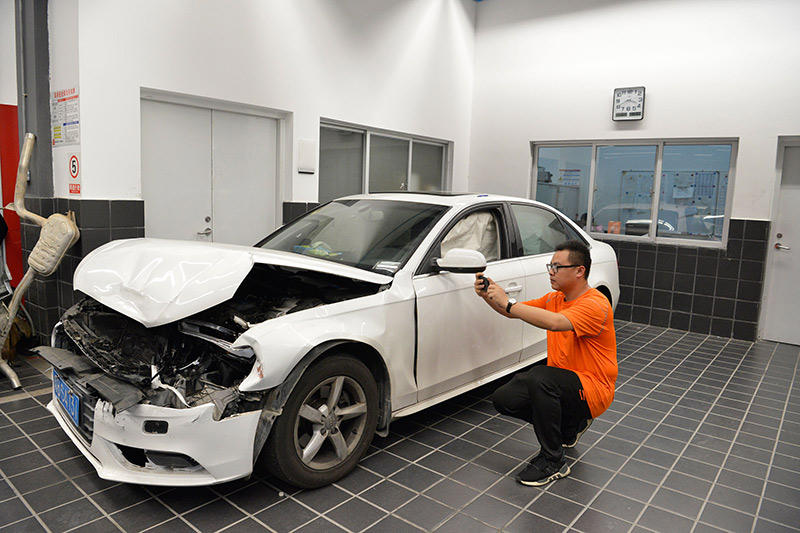
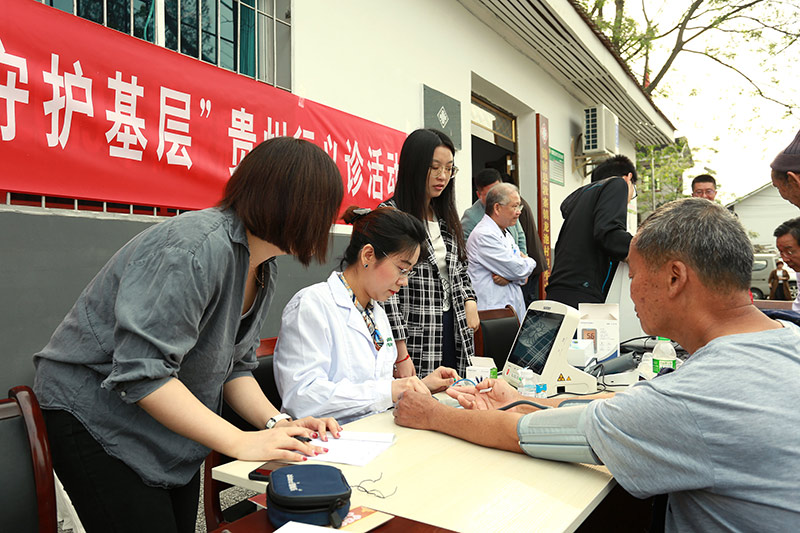
|
金融服務(wù)巨頭公司很少成為創(chuàng)新方面的領(lǐng)頭羊。平安自身的公司名便有“和平、安全”之意,讓人想起熱牛奶和充足的睡眠。然而平安已經(jīng)醞釀了一大批專屬技術(shù),用于支持集團(tuán)的五大“生態(tài)系統(tǒng)”,即金融、醫(yī)療、汽車、房地產(chǎn)和智慧城市。與此同時(shí),在線金融和醫(yī)療服務(wù)(一些通過自有品牌銷售,一些則授權(quán)給第三方)如今擁有5.65億多名注冊用戶。 平安將營收的1%用于創(chuàng)新投資。在過去10年中,該集團(tuán)已經(jīng)在研發(fā)領(lǐng)域投入了70多億美元,而且馬明哲曾經(jīng)承諾在未來10年將追加投資150億美元。這筆資金滋養(yǎng)了11家科技附屬公司,其中兩家——“好醫(yī)生”和汽車買家平臺“汽車之家”——已經(jīng)上市,也催生了多個(gè)估值達(dá)數(shù)十億美元的私營“獨(dú)角獸”。到目前為止,這5家企業(yè)中僅有兩家盈利。即便如此,集團(tuán)科技企業(yè)的合并估值達(dá)到了700億美元。 香港Schulte Research的首席執(zhí)行官保羅·舒爾特是金融公司如何運(yùn)用科技方面的專家。他說,平安“從一開始”就意識到了人工智能和數(shù)據(jù)分析的重要性。他指出,盡管其他中國公司是在新工具面前依然渾渾噩噩,但平安“超級清醒而且在不斷地推進(jìn)”。如今,這個(gè)推力正在變得越來越強(qiáng)大。 |
Giant financial services companies rarely double as disruptive innovators. Ping An’s very name, which means “peace and safety,” evokes warm milk and an early bedtime. Yet Ping An has already spawned a menagerie of proprietary technologies that support the group’s five key “ecosystems”: finance, health care, autos, real estate, and smart cities. Meanwhile, its online fi nancial and health care services, some sold under its own brand and some licensed to others, now boast more than 565 million registered users. Ping An earmarks 1% of revenue for investments in innovation. Over the past 10 years, the group has plowed more than $7 billion into research and development, and Ma has vowed to invest $15 billion more in the decade to come. That endowment has nurtured 11 technology affiliates, of which two—Good Doctor and Auto home, a platform for car buyers—are publicly traded and three are privately held “unicorns” with multibillion-dollar valuations For now, only two of those fi ve are profi table. Even so, the combined value of the group’s tech ventures tops $70 billion. Paul Schulte, CEO of Hong Kong–based Schulte Research and an expert on how financial companies use technology, says that Ping An grasped the importance of A.I. and data analysis “from the beginning.” While other big Chinese companies seemed to sleepwalk past the new tools, he says, Ping An was “hyper awake and constantly pushing.” These days, that push is only growing more forceful. |
****
|
平安大廈是中國第二高的摩天大樓,是深圳天際線的主要建筑之一,位于福田金融區(qū),共有118層。從其較高的樓層,高管們的視線可以在越過不多的建筑之后抵達(dá)一座小山,山頂建有鄧小平的雕像。這位領(lǐng)導(dǎo)人在毛澤東去世后讓中國走出了封閉和僵硬的計(jì)劃經(jīng)濟(jì)控制。負(fù)責(zé)平安集團(tuán)保險(xiǎn)業(yè)務(wù)的李源祥開玩笑說,自己天天都在向雕像鞠躬,為的是感謝鄧小平讓中國的經(jīng)濟(jì)和平安走上了快速發(fā)展之路。平安于1988年成立,當(dāng)時(shí)還是國有航運(yùn)企業(yè)中國招商局集團(tuán)低層官員的馬哲明說服了高層,讓他成立了財(cái)險(xiǎn)部門。那時(shí),保險(xiǎn)公司的概念對于中國來說還十分陌生,但中國招商局集團(tuán)總部位于深圳特區(qū)。在這里,政府不僅允許開展經(jīng)濟(jì)實(shí)驗(yàn),并對此持鼓勵(lì)態(tài)度。平安隨后進(jìn)軍壽險(xiǎn)和醫(yī)療險(xiǎn)業(yè)務(wù),獲得了這些市場領(lǐng)域的“先行者”優(yōu)勢,也正是這個(gè)期間,數(shù)百萬中國民眾第一次成為了富足的中產(chǎn)階級,也推高了對保險(xiǎn)的需求;公司最終設(shè)立了盈利的零售銀行。 從20世紀(jì)90年代開始,平安便利用不斷深化的改革環(huán)境,成為了中國首家外國公司參股的金融機(jī)構(gòu):高盛和摩根士丹利是早期的入股者。公司最終于2004年在香港上市。(當(dāng)前股東包括由泰國正大集團(tuán)控股的三家公司,在去年年底共計(jì)持股9.19%,正大集團(tuán)執(zhí)行董事長之子謝展在2018年12月收購了《財(cái)富》雜志。) |
PING AN TOWER, the second-tallest skyscraper in China, dominates Shenzhen’s skyline, looming 118 stories over the Futian fi nancial district. From its upper floors, executives can gaze over lesser buildings to a hill upon which stands a statue of Deng Xiaoping, the leader who steered China out of isolation and rigid centralized economic control after the death of Mao Zedong. Lee Yuansiong, the deputy CEO who heads Ping An’s insurance group, jokes that he bows to the statue every day—thanking Deng for setting China’s economy, and his employer, on the path to rapid growth. Ping An got its start in 1988 when Ma, then a junior official at state-owned shipping company China Merchants Group, persuaded superiors to let him set up a property and casualty insurance unit. The concept of an insurance company was unfamiliar in China, but China Merchants was headquartered in Shenzhen, a special economic zone, where economic experimentation was not only tolerated but encouraged. Ping An later branched into life and health insurance, enjoying “first mover” status in those markets just as millions of Chinese people attained middle-class prosperity for the fi rst time, driving demand; it eventually rolled out a profi table retail bank. Beginning in the 1990s, Ping An took advantage of widening reforms to become the first Chinese financial institution in which foreign firms could own equity: Goldman Sachs and Morgan Stanley were early backers. The company eventually went public in 2004, listing in Hong Kong. (Current shareholders include three companies controlled by Thailand’s CP Group, which together held a stake of 9.19% at the end of last year. Chatchaval Jiaravanon, son of the executive chairman of CP Group, has owned Fortune since December 2018.) |
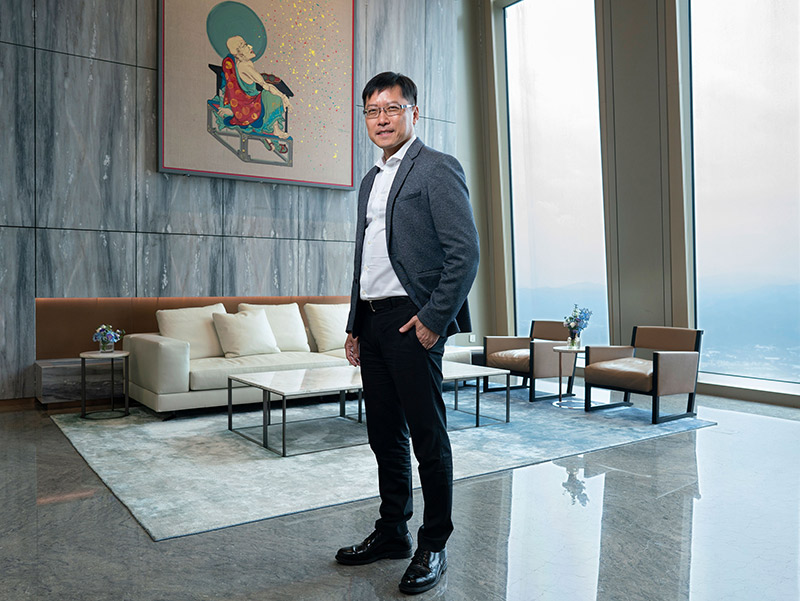
|
即便其客戶群和營收出現(xiàn)了飆升,平安公司也犯過錯(cuò)誤。通過收購進(jìn)行擴(kuò)張的舉措尤為不幸。2008年,平安購買了布魯塞爾金融巨頭富通 50%的股權(quán),但旋即富通便走向了破產(chǎn)。2010年,公司收購了陷入困境的商業(yè)借貸銀行深發(fā)展銀行,但收購之后便鮮有起色。 在應(yīng)對這些挑戰(zhàn)之際,馬明哲對騰訊和阿里巴巴的崛起感嘆不已。這些公司迅速地將電子商務(wù)和移動支付數(shù)據(jù)轉(zhuǎn)變?yōu)槌晒Φ漠a(chǎn)品,這也暗示了平安自身深厚的數(shù)據(jù)池所擁有的潛力。(馬哲明與阿里巴巴創(chuàng)始人馬云、騰訊創(chuàng)始人馬化騰同姓,但這三位之間沒有任何血緣關(guān)系。)公司的首席創(chuàng)新官羅中恒說,馬明哲的愿景在于,平安要發(fā)展成為一家融合性的公司,既要有穩(wěn)健金融公司的優(yōu)點(diǎn),又要結(jié)合靈活科技公司的特長,并通過創(chuàng)新和嘗試幫助保持這個(gè)大塊頭的穩(wěn)步增長。 為了實(shí)施這一愿景,馬明哲將目光投向了公司自身高管之外以及海外的人才市場。陳心穎于2013年加入平安,她成長于新加坡,并在麻省理工學(xué)院拿到了電器工程和計(jì)算機(jī)科學(xué)學(xué)位。她在咨詢公司麥肯錫工作了13年,后者是平安的客戶之一。她為平安開展的首個(gè)項(xiàng)目也成就了她的首次中國大陸之旅。她笑著說:“我記得當(dāng)時(shí)與辦公室經(jīng)理發(fā)生了爭吵。我真的不想去。”這項(xiàng)任務(wù)最后變成了一項(xiàng)18個(gè)月的奇幻歷程,期間,她幫助開發(fā)了一個(gè)首要的行政園區(qū)。她當(dāng)前的職務(wù)讓她經(jīng)常旅行于三點(diǎn)之間,也就是深圳、平安在上海32英畝的科技中心以及回新加坡探親。 保險(xiǎn)集團(tuán)負(fù)責(zé)人李源祥也來自于新加坡。澳大利亞人羅中恒在花旗銀行擔(dān)任了多個(gè)高管職務(wù),包括全球零售銀行負(fù)責(zé)人,他于2017年加入平安。首席科學(xué)家肖晶是中國人,他在硅谷精工愛普生和微軟干了一段之間之后于2013年加入了平安。肖晶說,在平安這家有著豐富數(shù)據(jù)資源的公司工作就像是發(fā)現(xiàn)了“珍寶島”一樣。 |
Even as its customer base and revenue soared, Ping An made missteps. Eff orts to expand through acquisition were particularly ill-fated. In 2008, Ping An bought a 50% stake in Brussels-based financial conglomerate Fortis, just before that company collapsed. The 2010 acquisition of Shenzhen Development Bank, a troubled commercial lender, has been slow to bear fruit.、 As he grappled with those challenges, Ma marveled at the rise of Tencent and Alibaba. The rapidity with which those companies parlayed data on e-commerce and mobile payments into successful products hinted at the power inherent in Ping An’s own deep data pool. (Peter Ma shares the same surname as Alibaba cofounder Jack Ma and Tencent founder Huateng “Pony” Ma, but the three are not related.) Ma’s vision, says Jonathan Larsen, the company’s chief innovation officer, was that Ping An could combine the best of a stable finance company and a nimble tech fi rm—innovating and experimenting to help keep a big company growing at a steady pace. To implement that vision, Ma has reached outside the company’s ranks and outside China itself. Jessica Tan, who joined in 2013, grew up in Singapore and earned degrees in electrical engineering and computer science from MIT. She spent 13 years at consultancy McKinsey & Co., where Ping An was a client. Her first project for Ping An also marked her fi rst trip to mainland China. “I remember arguing with my office manager,” she says, laughing. “I really didn’t want to go.” That assignment turned into an 18-month odyssey in which Tan helped develop a major administrative campus. Her current role puts her in constant orbit between headquarters in Shenzhen, Ping An’s 32-acre tech center outside Shanghai, and Singapore to see her family. Lee, the insurance group head, also hails from Singapore. Larsen, an Australian, held a variety of top roles at Citibank, including head of global retail banking, before joining Ping An in 2017. And Xiao, the chief scientist, is a Chinese native who joined in 2013 after stints in Silicon Valley at Seiko Epson and Microsoft. Starting at a company with a data trove the size of Ping An’s, Xiao says, was like discovering “Treasure Island.” |
****
|
將平安的數(shù)據(jù)能力與阿里巴巴和騰訊進(jìn)行比較是一個(gè)十分棘手的命題,因?yàn)楦骷夜居兄漠惖臉I(yè)務(wù)領(lǐng)域。作為阿里巴巴的主要零售市場,淘寶擁有6.66億月活躍用戶,而其移動支付平臺支付寶擁有超過10億名用戶。騰訊的微信平臺擁有超過10億的活躍用戶,他們平均每天產(chǎn)生450億條信息。舒爾特估計(jì),BAT(中國的百度、阿里巴巴和騰訊)每天合計(jì)處理的數(shù)據(jù)是平安成立以來所處理數(shù)據(jù)總量的10倍。 但平安的高管認(rèn)為,質(zhì)量比數(shù)量更重要。他們稱其業(yè)務(wù)收集到的數(shù)據(jù)比BAT的更加豐富,因?yàn)樗婕芭c健康、理財(cái)和財(cái)產(chǎn)有關(guān)的大額交易,這些都涉及客戶生活中最有意義的決策。 |
COMPARING PING AN’S data capabilities with those of Alibaba and Tencent is a tricky proposition, given the radically diff erent scales at which they operate. Taobao, Alibaba’s main retail marketplace, has 666 million monthly active users, while Alipay, its mobile payments platform, boasts more than a billion. Tencent’s WeChat platform draws more than a billion active users who generate an average of 45 billion messages—every day. Schulte estimates that the BAT (China’s troika of Baidu, Alibaba, and Tencent) processes at least 10 times as much data every day as Ping An has acquired in its entire existence. But Ping An executives argue that quality matters more than quantity. The data its businesses collect is richer than that gleaned by the BAT, they claim, because it involves big ticket transactions relating to health, wealth, and property— among the most meaningful decisions in customers’ lives. |
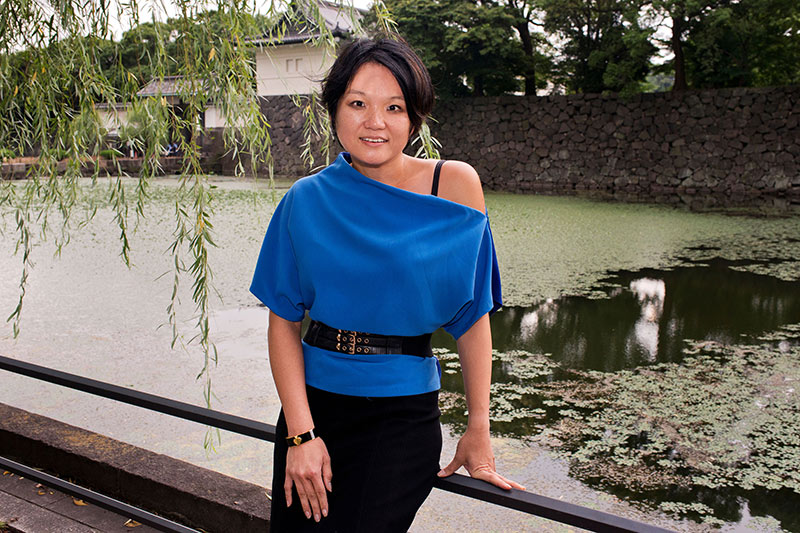
|
作為這方面的案例,陳心穎提到了汽車之家。當(dāng)平安2016年從紐約上市公司澳大利亞電信巨頭澳洲電信手中收購該網(wǎng)站的控股權(quán)時(shí),汽車之家看起來是一家十分有希望的公司,但有待實(shí)際檢驗(yàn)。在平安收購之后,該網(wǎng)站鞏固了其作為中國最大在線汽車銷售平臺的地位,同時(shí)開始逐漸盈利。陳心穎認(rèn)為平臺之所以出現(xiàn)轉(zhuǎn)機(jī),原因在于汽車之家使用了平安數(shù)十年積累的與電子商務(wù)無關(guān)的數(shù)據(jù),例如上千萬條有關(guān)汽車貸款和汽車保險(xiǎn)理賠的數(shù)據(jù)。同樣重要的是,平安說服了1.4萬家汽車經(jīng)銷商使用汽車之家進(jìn)行銷售管理,這樣便生成了有關(guān)消費(fèi)喜好的實(shí)時(shí)情報(bào)。所有這些信息讓汽車之家能夠更加精準(zhǔn)地定位目標(biāo)客戶,并為他們提供融資服務(wù)。陳心穎指出,“如果平安只是做純險(xiǎn)企,而且只盯著這塊業(yè)務(wù)不放”,這一點(diǎn)就無從說起了。 與經(jīng)銷商的合作為平安數(shù)據(jù)擴(kuò)張指明了一條道路。通過向其他公司授權(quán)大數(shù)據(jù)技術(shù),這家險(xiǎn)企打造了一個(gè)良性循環(huán),期間,平安通過合作關(guān)系收集了更多的數(shù)據(jù),從而讓公司能夠改善其運(yùn)營模式,并借此吸引更多的客戶。如今,已經(jīng)有22家汽車險(xiǎn)企使用“極速”事故理賠平臺。約460家中國銀行和超過1800家中小金融服務(wù)公司使用平安的一賬通金融平臺。平安的專屬云服務(wù)能夠讓公司以相對較小的成本擴(kuò)展這些產(chǎn)品,從而幫助這個(gè)生態(tài)圈更快地發(fā)展壯大。 |
As a case in point, Jessica Tan cites Autohome. When Ping An acquired a controlling stake in the New York–listed company from Telstra, the Australian telecom giant, in 2016, Auto home was seen as promising but unproven. Under Ping An, it has consolidated its position as China’s largest online auto sales platform while swinging to profitability. Tan attributes the turnaround to the fi rm’s ability to tap into decades of Ping An data unrelated to e-commerce—millions of records about auto loans and car-insurance claims, for example. Just as important, Ping An persuaded some 14,000 auto dealers to use Auto home for sales management—generating real-time intelligence about consumer tastes. All of this information enables Auto home to target customers more precisely and off er them services like financing—and it wouldn’t have been possible, Tan says, “if I were just a pure insurer who sticks to my stuff.” Those dealer partnerships point to one key to Ping An’s data expansion. By licensing big-data tech to other companies, the insurance giant creates a virtuous circle in which Ping An collects still more data through the relationships, enabling it to improve its models and thereby attract more clients. There are now 22 auto insurers using the “Superfast” accident-claim platform. Some 460 Chinese banks and over 1,800 other small- and medium-size fi nancial-services fi rms use Ping An’s OneConnect fi nancial platform. And Ping An’s proprietary cloud lets the company scale up these off erings at relatively little expense, helping the circle grow bigger, faster. |

|
平安以同樣的方式打造了備受歡迎的人工智能模型,用于評估消費(fèi)信貸風(fēng)險(xiǎn)。阿里巴巴、騰訊和平安都已經(jīng)獲得臨時(shí)牌照,用來提供信貸服務(wù),但平安更受金融機(jī)構(gòu)的青睞,攬獲了約200家銀行。盡管阿里巴巴和騰訊的模型依賴于對電子商務(wù)數(shù)據(jù)的分析,從而為其自有客戶提供消費(fèi)型小額貸款,但這類貸款的價(jià)值很少超過數(shù)千元(約合幾百美元)。陳心穎指出,平安的模型能夠?yàn)椤靶∑髽I(yè)主提供數(shù)十萬人民幣的完全無擔(dān)保貸款,這一點(diǎn)是沒有問題的,因?yàn)槲覀円呀?jīng)從事這項(xiàng)業(yè)務(wù)很多年了。” |
In the same vein, Ping An has built a popular A.I.-driven model for assessing consumer credit risk. Alibaba, Tencent, and Ping An have all been granted provisional licenses to off er credit-bureau services, but Ping An’s is the favorite of financial institutions; it’s being used by about 200 banks. While Alibaba’s and Tencent’s models rely on analysis of e-commerce data to underwrite small loans for purchases by their own customers, the value of such loans rarely exceeds a few thousand yuan—a few hundred dollars. Ping An’s model “can give a small business owner a loan for a few hundred thousand completely unsecured, no problem,” says Tan, “because we have been doing this for years.” |
****
|
為了支持其高屋建瓴的高科技策略,馬明哲組建了一支無與倫比的人才隊(duì)伍。平安雇傭了2.4萬多名軟件工程師、800名數(shù)據(jù)科學(xué)家和180名人工智能專家。公司稱已經(jīng)提交了1.5萬多項(xiàng)技術(shù)專利申請。平安還控制著龐大的風(fēng)投和私募股權(quán)基金,包括2017年設(shè)立的10億美元的專用基金——國際旅游者基金。管理該基金的羅中恒表示,這只基金專注于投資金融科技和醫(yī)療領(lǐng)域的早期初創(chuàng)企業(yè),目的是為了捕獲平安還未開發(fā)的平臺或技術(shù)。 平安被低估的股價(jià)經(jīng)常遭到平安高管的詬病,他們認(rèn)為將平安完全看作一家險(xiǎn)企會讓人忽略其作為科技公司的潛力。平安的股票市盈率約為12,與安盛和安聯(lián)相當(dāng),但遠(yuǎn)低于阿里巴巴和騰訊,這兩家公司的市盈率分別為35和38。 然而,一些指標(biāo)正在朝著正確的方向邁進(jìn)。公司稱,在過去兩年中,平安金融服務(wù)三分之一的新客戶已經(jīng)成為了其互聯(lián)網(wǎng)業(yè)務(wù)的注冊用戶。這意味著科技公司正在幫助代理“交叉銷售”更多高利潤產(chǎn)品,例如,當(dāng)人們使用汽車之家購買汽車時(shí)往往會在平安購買保險(xiǎn)。 該公司還將其科技資產(chǎn)組合視為抵御勞動力老齡化和經(jīng)濟(jì)增速放緩的一種保障手段。隨著中國人口老齡化,羅中恒看到醫(yī)療領(lǐng)域存在巨大的機(jī)遇。他說:“中國人變得越發(fā)富足,而且受教育的程度也越來越高,他們也會對服務(wù)標(biāo)準(zhǔn)有著更高的期許。隨之而來的有慢性疾病——54%的男性吸煙,其中9%的長期吸煙者會患上肺癌——以及其他一系列與心臟病、缺乏運(yùn)動、肥胖有關(guān)的病癥。”平安的HealthKonnect平臺旨在幫助中國政府控制這一正在逼近的疾病高發(fā)浪潮,后者負(fù)擔(dān)了中國55%的醫(yī)療成本。公司正在開發(fā)的多個(gè)功能可以幫助實(shí)現(xiàn)病例的數(shù)字化,分析醫(yī)療數(shù)據(jù),支付醫(yī)療費(fèi)用,并甄別醫(yī)療詐騙。 平安搜集和分析此類私人數(shù)據(jù)的能力正在快速增長,也引發(fā)了復(fù)雜的隱私問題。面部識別和“微表情”分析如今已經(jīng)成為使用平安云服務(wù)公司的標(biāo)準(zhǔn)功能。然而,如果銷售醫(yī)療保險(xiǎn)的公司通過面部掃描就可以計(jì)算器體脂率,客戶會對此感到高興嗎?“好車主”(Good Driver)應(yīng)用會時(shí)常傳回駕駛員去了哪,車速以及變道是否順暢等數(shù)據(jù),但它正在日漸成為購買車險(xiǎn)的一個(gè)強(qiáng)制下載軟件,這一舉措是否會引發(fā)消費(fèi)者的反感呢?如果銷售這些保險(xiǎn)的公司還知道投保者的職務(wù)、財(cái)富凈值以及病史,消費(fèi)者又該作何感想? 陳心穎表示,平安已經(jīng)開發(fā)了復(fù)雜的機(jī)制來保護(hù)客戶數(shù)據(jù)的隱私,而且這些數(shù)據(jù)在用于建模時(shí)都已經(jīng)進(jìn)行了匿名化處理。然而,有關(guān)個(gè)人保險(xiǎn)和貸款的決定當(dāng)然不可能是匿名的。中國文化通常并不像西方文化那樣注重隱私;在現(xiàn)實(shí)當(dāng)中,正是出于這一原因,平安自身的最大創(chuàng)新在現(xiàn)階段仍然可能只會專注于中國市場。馬明哲最近對《金融時(shí)報(bào)》說:“我們沒有進(jìn)行海外收購的意愿。中國市場有著最好的增長前景。” 平安在說服中國消費(fèi)者買單方面遇到了一些小問題。它通過一個(gè)老派的銷售力量來幫助出售保險(xiǎn),也就是110萬銷售其保單和其他產(chǎn)品的獨(dú)立代理。自動化也為這支隊(duì)伍帶來了影響。羅中恒說:“他們基本上不會使用紙張。客戶關(guān)系管理、社交網(wǎng)絡(luò)管理都是自動化的。”然而,他們年復(fù)一年地為公司帶來了數(shù)十億美元的銷售額:事實(shí)證明,在中國這種新興國家,在吸引客戶方面最好用的應(yīng)用莫過于真人。(財(cái)富中文網(wǎng)) 本文另一版本登載于《財(cái)富》雜志2019年8月刊,標(biāo)題為《平安的數(shù)據(jù)城堡》。 譯者:馮豐 審校:夏林 |
TO SUPPORT his high-flying high-tech strategy, Ma has assembled a formidable talent pool. Ping An employs more than 24,000 software engineers, 800 data scientists, and 180 A.I. specialists. The company says it has fi led more than 15,000 technology patent applications. Ping An also controls a gaggle of venture and private equity funds, including the Global Voyager Fund, a $1 billion war chest launched in 2017. Larsen, who helms Voyager, says the fund focuses on early-stage ventures in fintech and health care—securing stakes in platforms or technologies Ping An has yet to develop itself. That the stock is undervalued is a constant lament of executives, who argue that viewing Ping An solely as an insurer misses the potential of its tech ventures. Ping An shares trade at a price-to-earnings ratio of about 12—on par with mature insurers such as AXA or Allianz but a far cry from Alibaba and Tencent, which trade at 35 and 38 times earnings, respectively. Still, some metrics are trending in the right direction. Over the past two years, a third of new customers for Ping An’s financial services have already been registered users of its Internet businesses, the company says. That suggests the tech ventures are helping agents “cross-sell” more lucrative products—for example, when people who use Autohome to buy a car wind up getting insurance from Ping An. The company also counts its technology portfolio as a hedge against a graying workforce and a slower economy. Larsen sees a huge opportunity in health care as China’s population ages. “You’ve got higher expectation of service standards from an increasingly affluent and educated population,” he says. “You have the onset of chronic diseases—54% of males smoke, 9% of long-term smokers get lung cancer—and a host of other conditions [related to] heart disease, lack of exercise, obesity.” Ping An’s HealthKonnect platform aims to help the Chinese government, which covers about 55% of the country’s health care costs, contain this looming wave. The company is working on features to help digitize medical records, analyze health data, pay bills, and spot fraud. Ping An’s burgeoning capacity to collect and analyze such intimate data raises complicated privacy issues. Facial recognition and “micro-expression” analysis are now standard features for companies using Ping An’s cloud. Should customers be pleased that a company that sells health insurance can calculate their body fat percentage with a face scan? Does it bother consumers that the Good Driver app—which constantly relays where they go, how fast they drive, and how smoothly they change lanes—is increasingly a mandatory download for someone buying auto insurance? And what if the company selling them that policy also knows their occupation, net worth, and health history? Tan says Ping An has developed elaborate systems to safeguard the privacy of client data, and that data is fully anonymized before being used in modeling. But decisions about insurance and loans for individuals, of course, are anything but anonymous. Chinese culture generally doesn’t place the same value on privacy that Western culture does; in practice, that makes it likely that Ping An’s biggest innovations will remain concentrated in China for now. “We don’t have aspirations to make acquisitions overseas,” Ma recently told the Financial Times. “The Chinese market has the best growth prospects.” Ping An is having little trouble persuading Chinese consumers to sign on. It’s doing so with the help of an old-school sales force—the 1.1 million independent agents who sell its policies and other products. Automation has affected this army too. “They basically never touch a piece of paper,” Larsen says. “Client relationship management, social network management—it’s all automated.” Still, they drive billions of dollars in sales, year after year: In emerging economies like China’s, it turns out, the killer app for wooing customers remains an actual human. A version of this article appears in the August 2019 issue of Fortune with the headline "Ping An's Castle Made of Data." |













